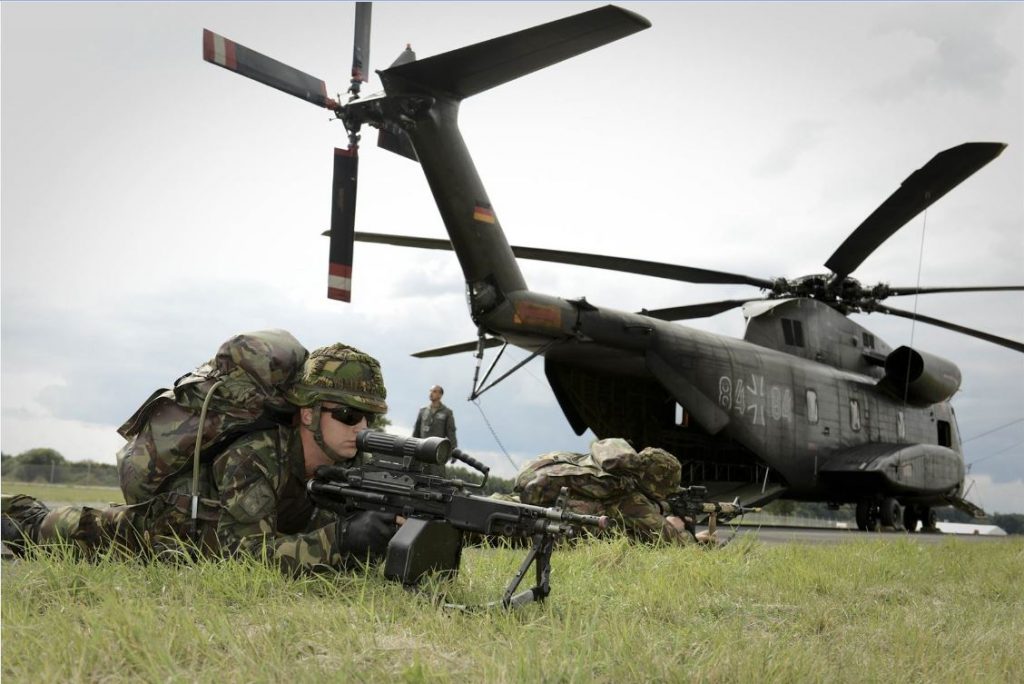An Impressive Nordic Defense Initiative Should Invite the Three Baltic Nations to Join
As Russia’s attacks on Ukraine revive concerns about the security of its northwestern neighbors as well, last month’s NATO summit conference took two noteworthy steps, among others, to address the Russian danger. For one, the allies authorized a new quick-response force to reassure the Baltic States—Estonia, Latvia, and Lithuania—of the alliance’s ability to protect them.
Separately, the alliance stepped up its cooperation with nonaligned Sweden and Finland. Those countries agreed with NATO to improve the “inter-operability” of their forces with NATO militaries, and they opted to strengthen plans with the alliance for any possible NATO deployment on their territories. Since 2009, Sweden and Finland together with their three NATO neighbors Denmark, Iceland, and Norway have established a Nordic Defense Cooperation initiative.
As the United States and its allies seek further ways to buttress NATO’s protection and reassurance of the three nervous Baltic states, an inexpensive “win-win” would be for the five Nordic partners to invite their Baltic neighbors into their defense-cooperation club. That step would give the tiny Baltic militaries new opportunities for top-quality military training, planning, arms procurement, and capability development. Politically and psychologically, that new layer of connectivity within NATO would strengthen the Balts’ place in both the alliance and the Euro-Atlantic world.
Low-Cost Help to Balts
Such a Nordic-Baltic military partnership would represent low-cost help to the Balts – not only in financial terms, but politically and diplomatically. Russian President Vladimir Putin reacted harshly to NATO’s decision last month to mount a continuous deployment of forces in Eastern Europe, calling it a threat to Russia. But Moscow would find it harder to portray as a menace a closer Baltic relationship with Nordic partners that include nonaligned states and no significant Russian strategic rivals.
The second “win” for NATO would come from a stronger security partnership in the Nordic and Baltic area. That is because NATO has been trying to encourage exactly “subregional” groupings as an inexpensive way to improve the effectiveness of Allied defense policies. Analysts and NATO officials have described the existing Nordic Defense Cooperation (or NORDEFCO) framework as a model for other subgroups in the Alliance—and indeed as a prototype solution to some of Europe’s toughest problems in affording its own defense. As former State Department European defense specialist Jeffrey Stacey noted in 2012 “central European countries could learn from the best practices of NORDEFCO.”
Like many good ideas, this NATO emphasis on subregional partnerships is rooted in money—or, more correctly, the lack of it. Following the 2008 global financial crisis, NATO strengthened its efforts to get more out of Allied defense budgets. At their Chicago Summit in 2012, NATO heads of state adopted the Smart Defense and Connected Forces initiatives, which are increasingly focused on subregional cooperation, both “upstream” (in developing new defense capabilities) and “downstream” (in training and operations).
Nordic Defense Cooperation: A Model
The Nordic grouping fits that description. It declared at its 2009 founding that it aims for “pragmatic cooperation across the entire range of defense structures in order to achieve better cost-effectiveness and quality.”
Inviting the Baltic states into the Nordic grouping would not be difficult. NORDEFCO has few bureaucratic obstacles; it operates with no permanent secretariat, but works through the actions of its members. Its framework includes provisions for cooperation with third parties, explicitly mentioning the Baltic nations. Moreover, the Nordic and Baltic countries already have cooperated successfully, notably in their joint creation in 1999 of the Baltic Defense College (at Tartu, in Estonia) to train military officers from Estonia, Latvia, and Lithuania.
The formal creation of a Nordic-Baltic Defense Cooperation framework would not only further the prominent role of Sweden and Finland as premier partners in NATO, it would bolster Baltic independence in the face of Russia’s challenges, and would strengthen the region’s security institutions in tune with NATO.
Dr. Henrik Breitenbauch is a nonresident senior fellow with the Brent Scowcroft Center for International Security at the Atlantic Council. A longer version of this article appeared as a chapter in Advancing U.S.-Nordic-Baltic Security Cooperation published by the Center for Transatlantic Relations at Johns Hopkins University’s School for Advanced International Studies.
Image: Norwegian troops conduct a military exercise as part of preparation for Norway's role in NATO's rapid response force. (Norwegian Armed Forces/www.mil.no)
